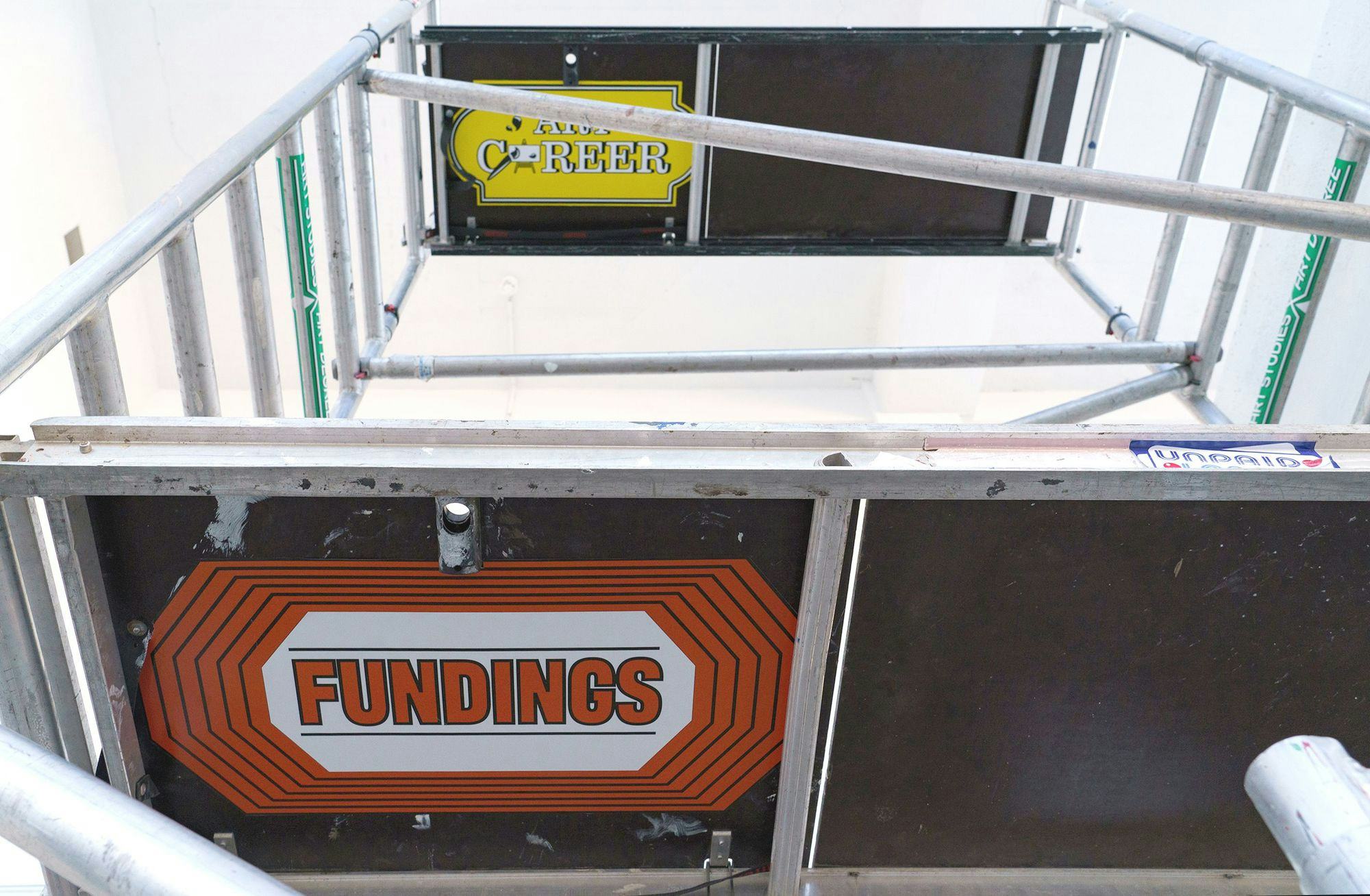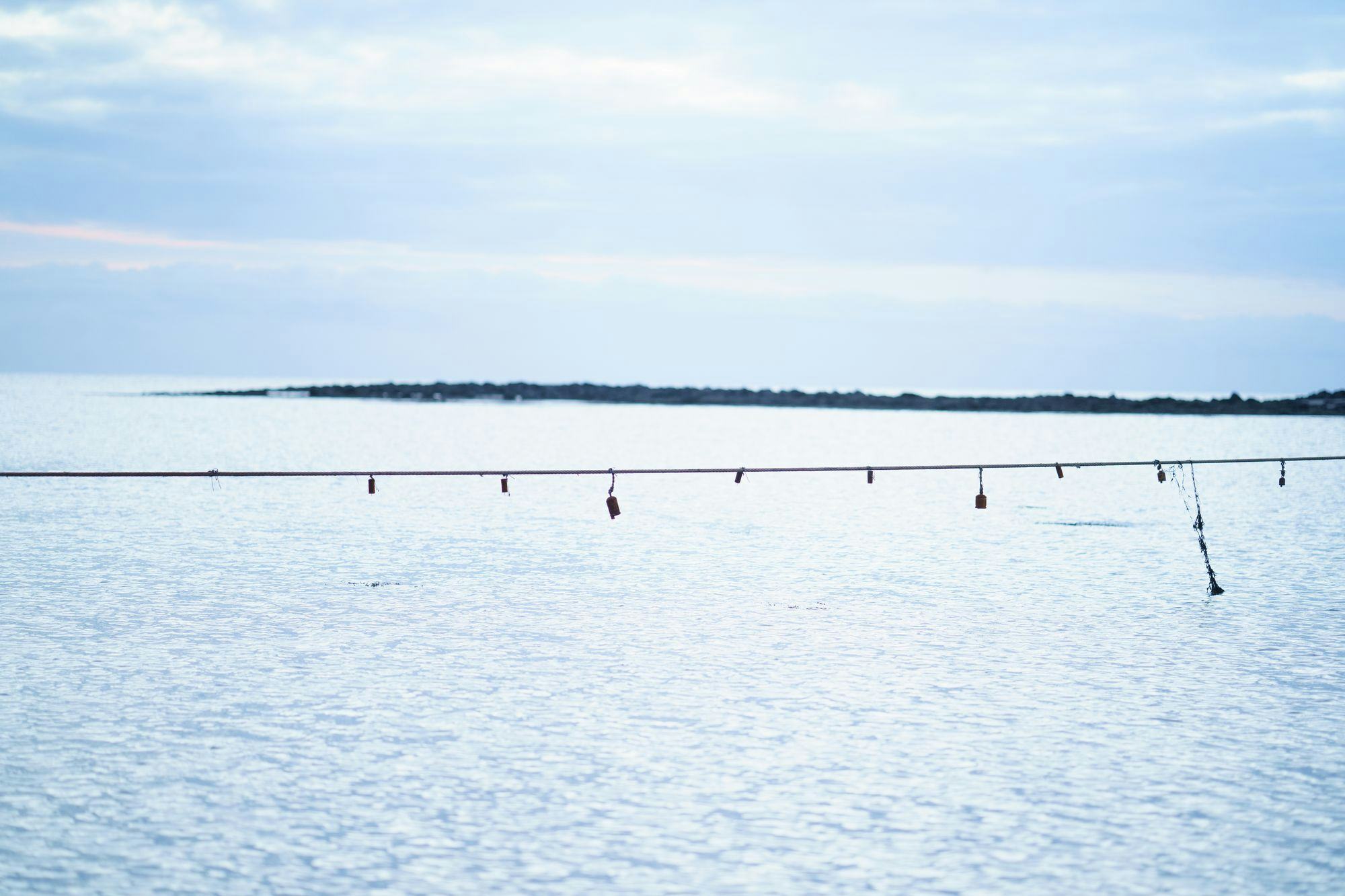Wooden piles, limestone, brick, and Istrian stone, the four materials used to build the UNESCO World Heritage Site Venice, Italy. This is where I reside during my two-month internship at the 60th International Biennale Arte. The sounds of chatter echo in the narrow streets where your eyes come across historic Renaissance frescos amidst medieval architecture. The amount of beauty is inspiring; at times overwhelming, yet amongst the charm and medieval nostalgia, something feels peculiar. It hits me as I sit below a Platano tree in San Giacomo Square, its bark reminiscent of a Van Gogh watercolor painting. If this city is built on wooden piles in the Mediterranean Sea, how do the sparse trees survive on this island? How does a seed grow through limestone and brick without soil in the middle of a lagoon? I wonder if it´s a coincidence that the biannual festival resides in the island's greenest quarters, accurately named Giardini or “The Gardens”. With the ongoing genocide in Palestine, I am reminded of the resilience of artists creating in conditions that are now quite the antithesis of the lush biennale gardens. In 1805 Napoleon Bonaparte ordered the public garden space to be built in Venice, while the festival sprouted within the district of foliage later in 1895. A flood of questions enter my mind, as when one travels far from their homeland. Perplexed by the ancient Palestinian olive trees that grow despite destruction and war, I am drawn to explore the subcultures of art that sprout during devastation. In April I attended the Iceland & Ireland opening party in solidarity with Palestine. I can’t help but think how Palestinian artists faced with grueling conditions thrive within a festival that does not accept their participation. From which seed does art grow when there is a lack of vital support? Where does art go without the support of its contemporary kin? With these questions in mind; I take to the streets to explore art inside and outside the extravagant gardens of Giardini Biennale.

Vivien Sansour. Palestine Heirloom Seed Library, (2024) South West Bank collateral event
I walk across the famous wooden bridge into the Accademia district, a sentiment of education and culture is present, not felt in tourist regions of central Venice. The neighborhood is young, vibrant, and agreeable; with bookstores, museums, and collateral Biennale events scattered every few hundred meters. I follow Google Maps to the South West Bank Pavilion, leading me down a tapered alleyway far from the bustling streets. The passage is somber yet calming, a respite from the overstimulation of the city and the biennale. I turn left to enter the pavilion and my initial reaction is relief. Unlike most pavilions that overexert their energy with the latest pomp and circumstance, the South West Bank has opted to represent the fragile relationship between plants and people in humble execution. Photographs, videos, and natural goods are exhibited rather than the latest over-the-top AI simulation. In the South West Bank region of Palestine, artists living under brutal occupation resource their creativity from their daily existence of conflict and ancestral knowledge. Their cultural identity is intrinsically bound to ongoing resistance and survival, as embodied in the Venetian trees growing in unfavorable conditions. Palestinians have spent decades under the colonialist predisposition that they do not exist as an entity. Yet, the persistent sense of protecting what's left of Palestinian land is visible through their art. I continue to explore the one of few Palestinian representations during the Biennale, its exclusion from the festival due to Italy not recognizing Palestine as a sovereign state.
In the collective art space, small sachets of the seeds hang on one end of the pavilion, the same seeds that disappeared within minutes of being available to visitors. Artist, Vivien Sansour has dedicated her artistry to planting gardens of ancient crops with the use of heirloom seeds from Palestinian land with her ongoing project Palestine Heirloom Seed Library (PHSL). The seeds have been carefully selected through millennia, holding the DNA of Palestinian history and wisdom with promise for future biodiversity. Sansour´s simple act of planting seeds is a potent exercise in rebellion and contemplation of future life imbued with hope. The seeds tell stories woven in ancestral roots, simultaneously holding vital information of which plants continue to defy the violence of their occupation. Adjacent to the seed project, artist Sari Khoury´s Grapes of Wrath, (2021) displays Palestinian wine representing a similar resilience ascending from decades of adversity. The award-winning wine originates from pre-occupation vineyards of rare native Palestinian grape varietals. Crushed by Israeli military force tanks, the vines have grown back to life between damaged soil and rocks, reminiscent of the fragile trees growing through inhospitable elements of Venetian streets. Khoury´s use of monoculture ancient grapes defies the settler culture modernism forces onto indigenous people within the West Bank region. Adam Broomberg and Rafael Gonzalez present their work Anchor in the Landscape (2022) exhibiting photographs of olive trees in the occupied territory, many thousands of years old. In land that is increasingly disputed and destroyed, each portrait portrays the fragility and resilience of Palestinian people through their personal relationship with their landscape. I continue to explore the enigma of Venetian trees growing in the soil-less city. Simultaneously I reflect on how a nation with a widely considered notion of “non-existence” can cultivate an environment materializing into artistic creation.

Frieda Toranzo Jaegerand. Rage Is A Machine In Times of Senselessness, (2024) Arsenale
Scattered across the city are seeds of Palestinian solidarity in the form of graffiti, murals, and collateral events, reminiscent of the diaspora of displaced Palestinians. I continue to walk through Accademia, taking notice of “Palestina Libera” tagged every few hundred meters. The University gates are splattered with red paint, expressing students' dismay with the institution´s ongoing ties with Israel. Mexican artist Frieda Toranzo Jaegerand references the free Palestine movement with her painting Rage Is A Machine In Times of Senselessness (2024) at off-site Arsenale. Seven watermelons are portrayed, the fruit being a rebellious symbol of the nation's flag. Several watermelons are sliced, their seeds exposed, representing the often violent violation of Palestinian basic human rights. One watermelon reads "Viva Palestina" on its flesh, embodying the raw, corporeal desire for survival. In Palazzo Mora, the collaborative show Foreigners in their Homeland: Occupation, Apartheid, Genocide (2024) is on display for the same duration as the art festival. Originally rejected by the board of Biennale, the show was ultimately approved as a collateral event due to a petition started by founder of the Palestine Museum US, Faisal Saleh. The foundation stated their rejection was due to their desire to focus on art that wasn’t imbued in the political realm, yet a great extent of the international pavilions are brazenly politically charged. The exhibition is direct and poignant, referencing life in exile, occupation, death, and destruction. The affinity/parallelism of art being created in nearly impossible conditions and the Venetian trees growing without proper nourishment returns to my mind.

Hildigunnur Birgisdóttir. Healthy Gums. Healthy Life, (2024) Icelandic pavilion
Within the Icelandic pavilion, artist Hildigunnur Birgisdóttir has planted her own seeds of Palestinian alliance. Birgisdóttir’s Healthy Gums. Healthy Life (2024) wet wipes are overflowing, with "Free Palestine" written in the fine print. The serviettes are abundant, open for guests to take either for relief from the heat or as a souvenir of the Nordic pavilion. Guests are either perplexed or amused by the wipes, playing a vital role in conveying Birgisdottir´s message of our strange relationship with mass-produced products. Inadvertently dispersing the wipes around the city, they are often ripped open and thrown onto the biennale floors, at times seen as far as in the tourist neighborhood of San Marco. The wipes scattered across the island play a performative role, spreading a message of solidarity with the decades-long struggle of Palestinians. The piece is empathetic, a decisive message of Iceland´s stance on the genocide taking place within the marginalized state. As I explore the biennale spectacles, occasionally I come across additional seeds of solidarity in the form of ANGA stickers(Art Not Genocide Alliance). Placed in pavilions such as the Netherlands, Belgium, Iceland, and Ireland. Amidst these artists is a consensus, condemning the participation of genocidal countries in the biennale. I look at the ANGA sticker placed on Hildigunnur´s piece Infoxication (2024), once again faced with the surreal thought of artists transmuting collective pain into human expression during precarious times. As seeds transform into plants through limestone with limited support from their surrounding environment, artists openly supporting ANGA face a risk of future exclusion due to the Biennale's disfavor of the political climate.

Ersan Mondtag. Monument to an Unknown Person, (2024) German pavilion
I walk through Napoleon's gardens with a new Venetian friend, he points to a plant and tells me its name Cistus Creticus, a plant known for its historic resilience. We pass the German pavilion. It is banal, over presumptuous, and loud, yet outside of their concrete walls is a mound of soil artist Ersan Mondtag has brought from family land in Turkey. The pile of earth which is part of his work Monument to an Unknown Person (2024) has started to sprout various plants and my friend tells me people have been throwing seeds into the soil since the opening of the biennale. This sentiment sparks a knowing within me, an ancient desire to plant my own seeds of camaraderie. After all, art does not come to life, grow, or exist in a vacuum, it reaps what it sows. To flourish as an artist, basic needs must be met, yet Palestinian artists have proven time and again their strength in the face of continuous adversity. After some Google-ing I find the answers to my questions, well at least to one. Venetian trees were originally planted in the lagoons swamp below the limestone, disregarding the conditions otherwise too hostile for life to grow. The trees found resources in an environment seemingly impossible to thrive in, resembling Palestinian’s creation under continuous violent conditions. Artists from the region illustrate pure optimism, through their cultivation of trees, art, and activism. Spreading messages of enduring hope, Palestinian artists continue to cultivate their culture locally and globally, creating promise of life for future generations through collective creation.
This is the sixth article about the Venice Biennale where the main themes and ideas are explored, as well as the national pavilions, the uncertainty of current events and the main exhibition, Foreigners Everywhere which is curated by Adriano Pedrosa.
Newly graduated artists from Iceland University of the Arts and art theorists from The University of Iceland, interns situated in Venice, are currently working on articles and reports of key ideas and themes of current exhibitions of La Biennale.
Mirra Elísabet Valdísardóttir Wesneski, is a Reykjavík based visual arts theorist born in 1988. She explores the boundaries between art, movement and nature as a healing modality. Mirra completed her BA degree in art theory at the University of Iceland (HÍ) in December of 2023 and will continue her studies of Art and Welfare at Iceland University of the Arts (LHÍ) this autumn.



-icelandic-pavilion-2000x2667.jpg&w=2048&q=80)

